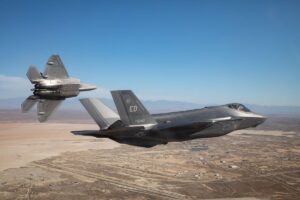
RTX [RTX] began deliveries of its Next Generation Electro-Optical Distributed Aperture System (EO DAS) for the Lockheed Martin [LMT] F-35 fighter in January, as the F-35 program looks to use military personnel to help sustain the Northrop Grumman [NOC] AN/AAQ-37 DAS, which the RTX EO DAS is to replace, and the Northrop Grumman AN/APG-81 active electronically scanned array radar. The F-35 Joint Program Office declined to say whether the RTX Next Generation EO DAS has flown in any of the…














